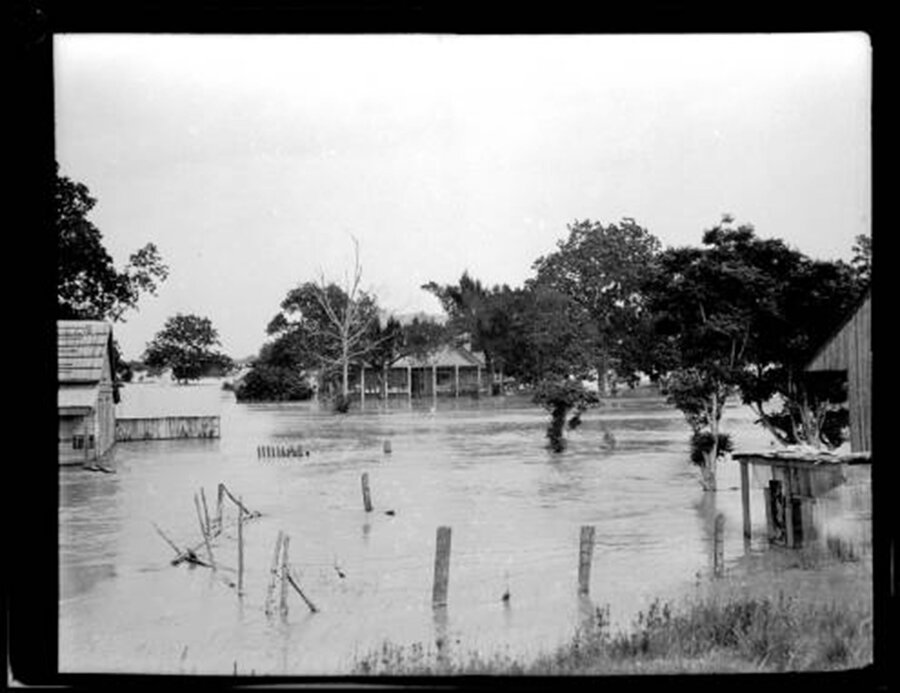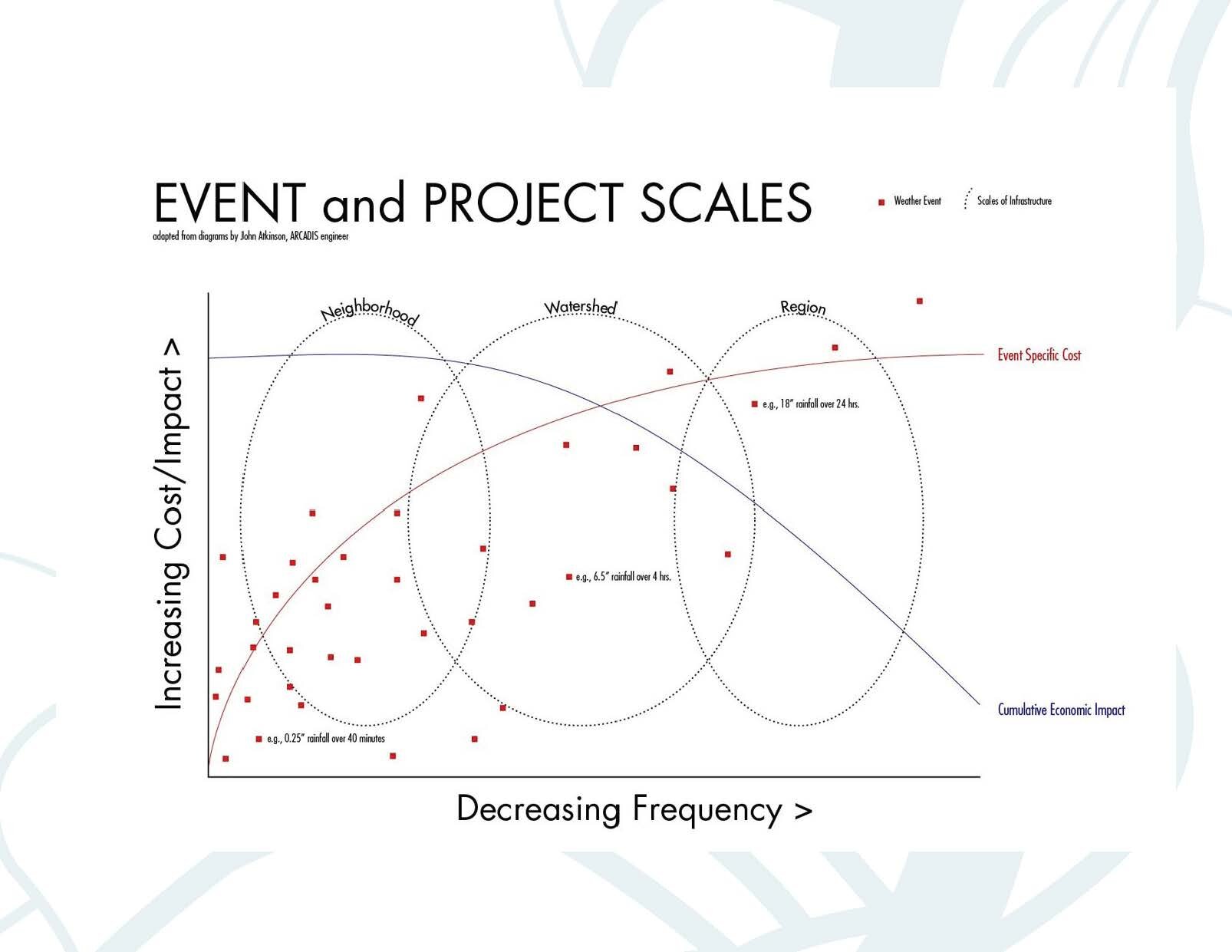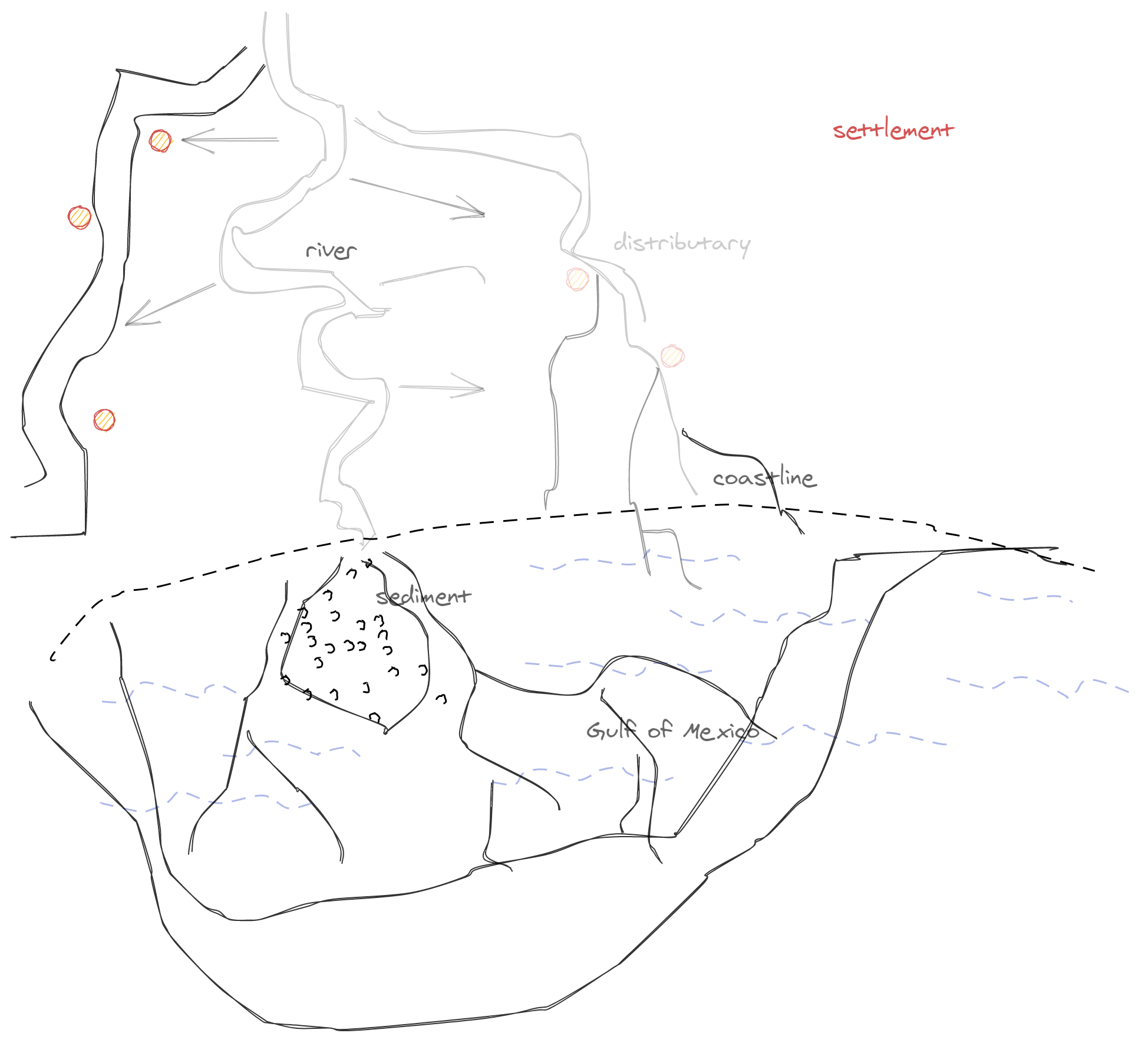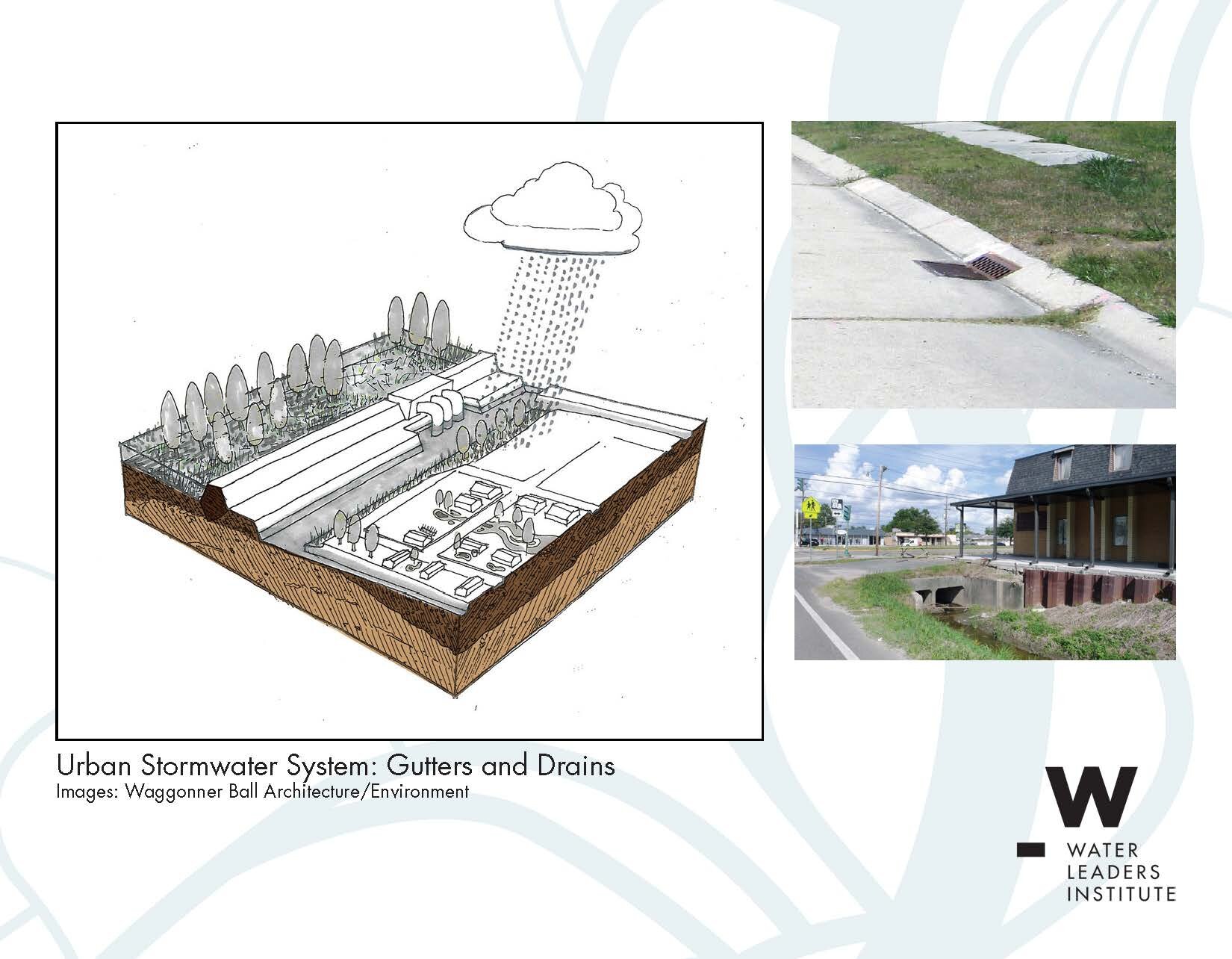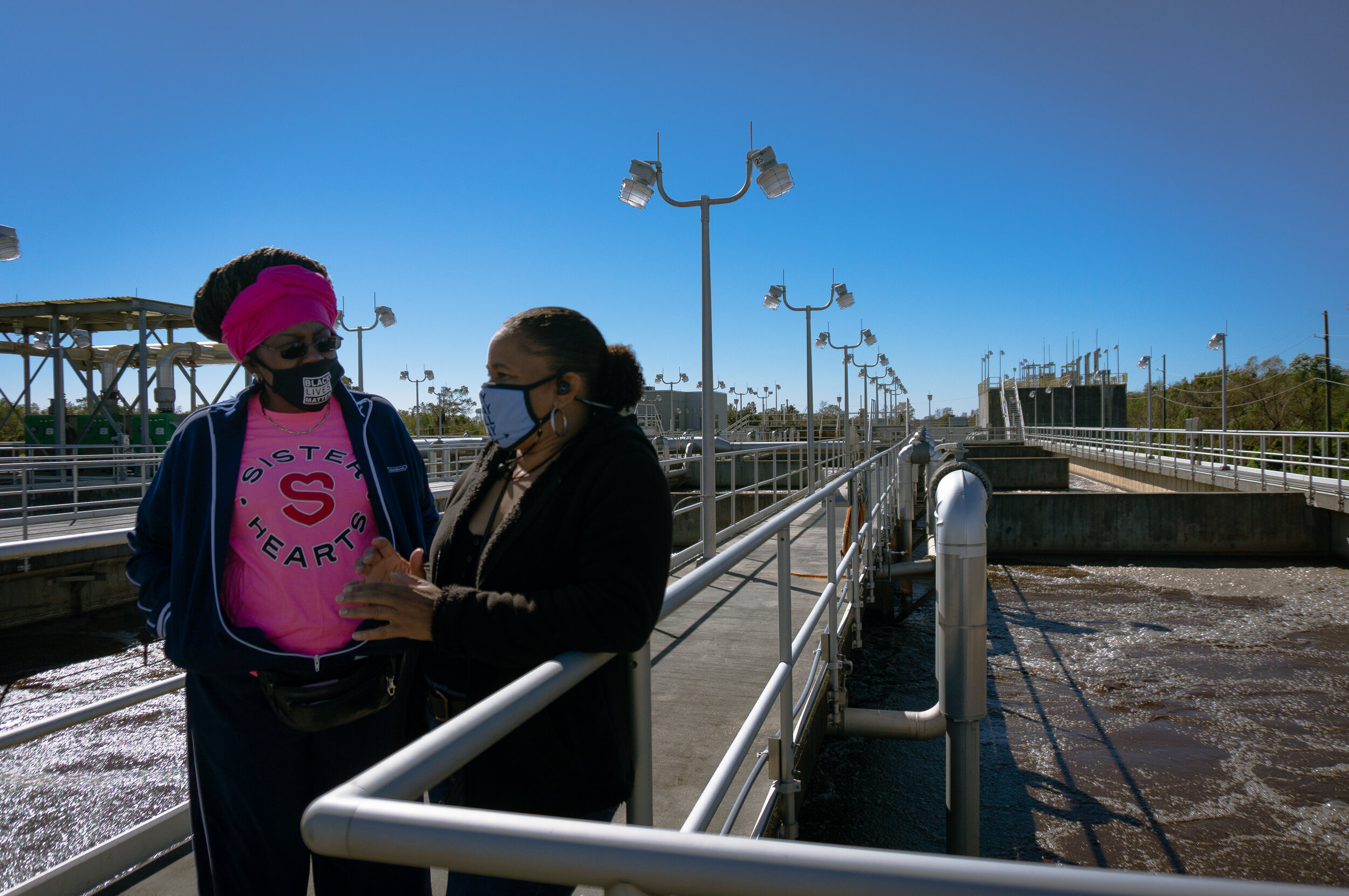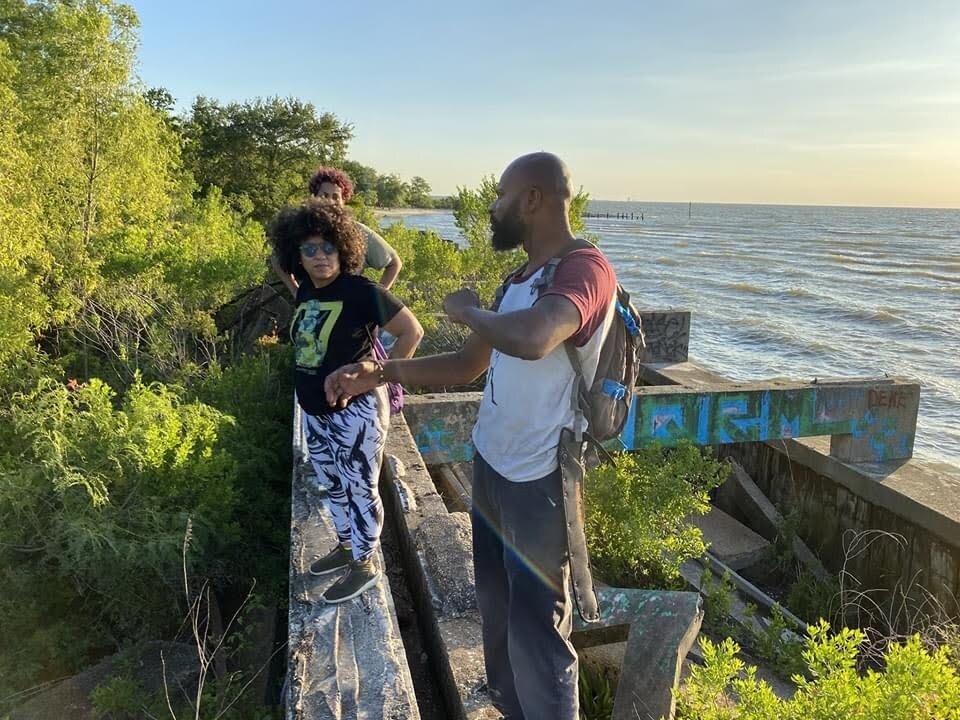St. Bernard Cohort, 2020
How does one begin to talk about water in a place that has been built, sustained, and also battered by the flow of water, as well as human attempts to control that flow? This fall, a cohort of leaders from across St. Bernard Parish joined WLI to share in this conversation.
Over the course of three weeks, these leaders connected with each other as gardeners and fishers, educators and students, scientists and public servants. Each person brought their individual experiences with St. Bernard’s waterways, waterfronts, and wetlands. We used those diverse perspectives to build a shared understanding of how water, land, and culture are intertwined in the delta landscape.
Week one, we studied land formation and human settlement, with co-creator’s Monique Verdin’s collages as inspiration and prompt for thinking about the layering of sediments and histories.
Week two, we explored water infrastructure and the drainage pump stations, drinking water systems, and sewage treatment systems that sustain life as we know it in the parish.
Week three, we discussed the impact of climate change in relation to how storms are experienced locally, as well as terms such as green infrastructure, resilience, climate adaptation, and “living with water.”
Throughout, story circles and community conversations created space for participants to engage in dialog with each other, as well as guests like Cyndhia Ramatchandirane; Jacob Groby from St. Bernard Water & Sewer; WLI alum and designer John Coyle; and Tricia “Blyss” Wallace, Sage Michael, and Christine “Cfreedom” Brown from New Orleans for Lincoln Beach.
Jacob Groby also led a tour of St. Bernard’s primary drinking water and sewage treatment plants for cohort members and co-creators, giving a step by step overview of how water flows from the river to the home, and from there back to the river. (Images available here.)
We thank each cohort member for their curiosity, insights, and stories. We thank our co-creators Monique Verdin, Maryam Henderson-Uloho, and Nancy Burtchaell for shaping and enlivening the Water Leaders curriculum to speak to the history and people of St. Bernard, and helping to adapt the program to an online format due to COVID. And we’re grateful to the Meraux Foundation for supporting this work.
—
Image descriptions and credits
Flooding in St. Bernard Parish, 1922 (Image: Louisiana Digital Library)
Workshop prompt (Collage: Monique Verdin)
Workshop slide on mapping storm impacts and recurrence
Live drawing from workshop, on delta formation
Workshop slide on stormwater infrastructure (Images: Waggonner & Ball)
Visit to Munster Sewage Treatment Plant (Image: Maggie Hermann)
New Orleans for Lincoln Beach leaders at Lincoln Beach in New Orleans East (Image: provided by Sage Michael)
